After buying a monocle-compliant Breguet Classique and a ethereal Hublot full calendar, I thought that was enough unusual watches for one person. The watches rested peacefully in their box, surrounded by more conventional models, waiting for days when I wanted something different. It was a sensible thought, but the wrong approach. Once you veer off the beaten path, there’s no turning back.
I found myself reaching for one of my regular watches from the box less and less often. They seemed awkward and ingratiating to me. Their design features were as outdated as a Saturday night show on television, and their shine was as artificial as the frosting on frozen doughnuts.
It became clear to me. I also wanted an eccentric watch for my leisure time: for life by the sea, on a sailboat, at the beach bar, and for building sandcastles with my kids. In other words, I wanted an elevated tool watch that goes just as well with bare feet as it does with tassel loafers.
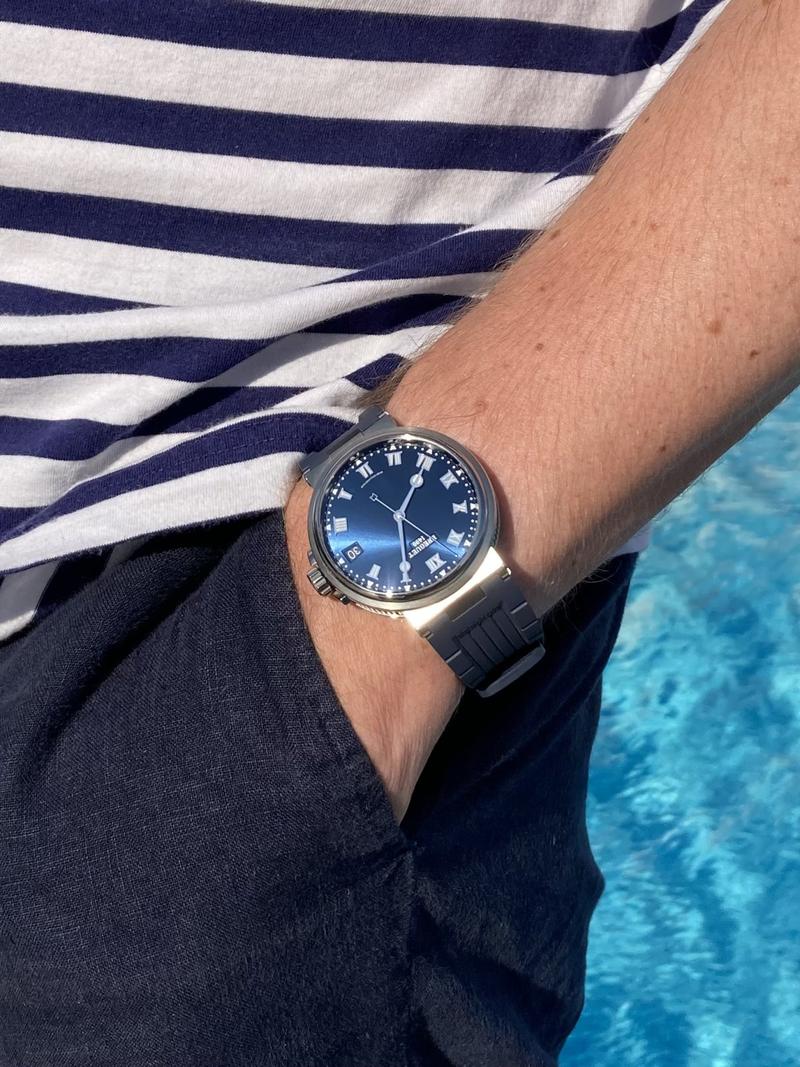
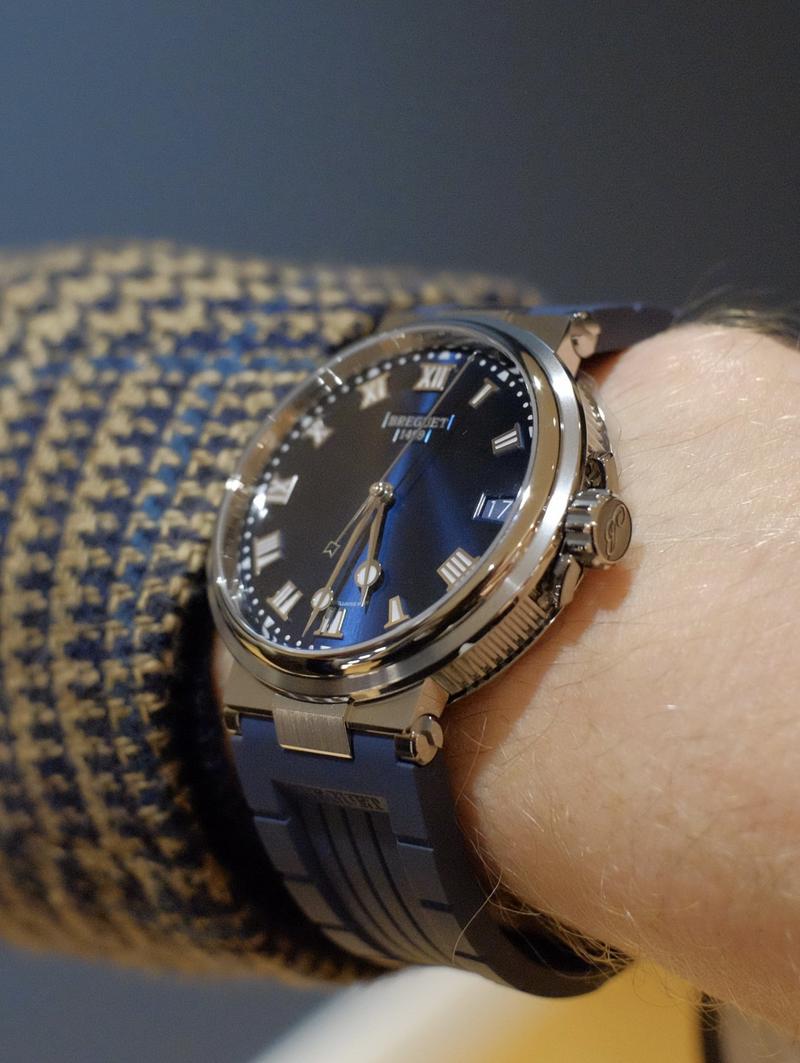
It turns out that’s not so easy because, as in other areas of life, the most beautiful objects aren’t necessarily the most practical. But I wanted a completely unique watch that is still made for everyday life. It should have lume, be water-resistant up to 100 meters, and not be too susceptible to scratches. I also didn’t want anything flashy that would make me worry about being mugged.
After trying various other brands, I came across the Breguet Marine. The watch refers to the period after 1815 when Breguet was the official supplier to the French Royal Navy. This maritime connection makes it quite practical. It is water-resistant up to 100 meters and saltwater-resistant in the titanium version. It also has lume on the hands and numerals, which is ideal for someone like me who wants a dignified timepiece.
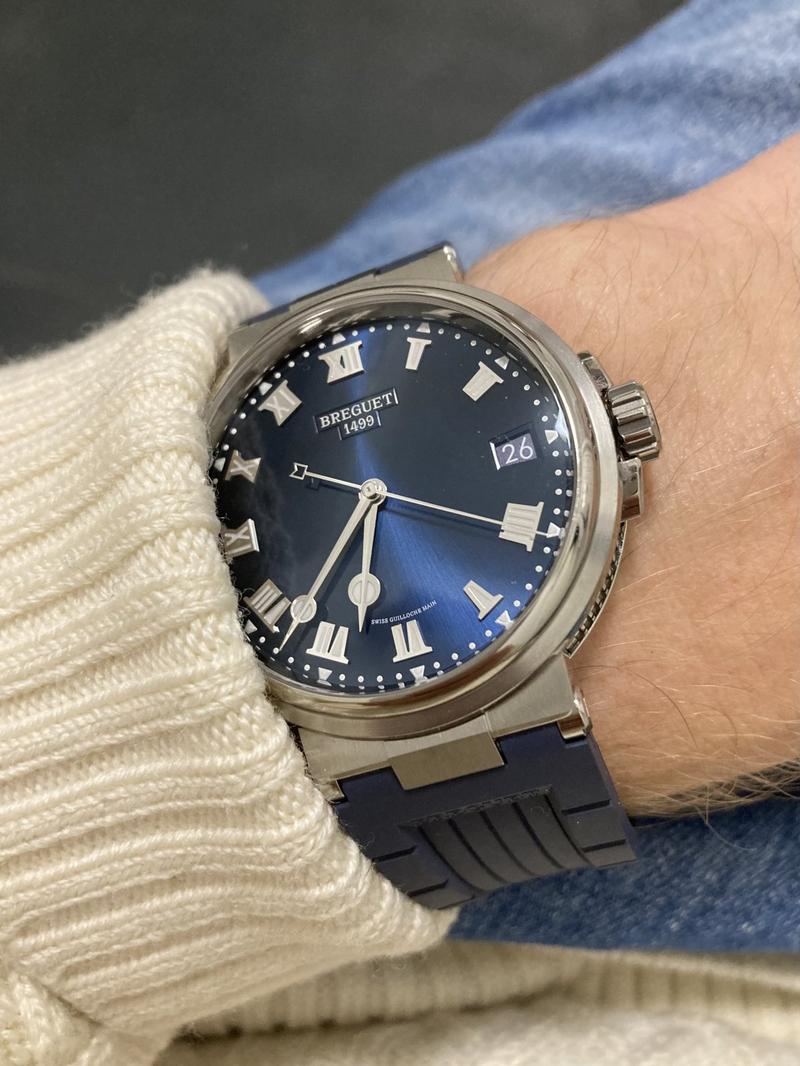
The Marine essentially features the traditional design of marine chronometers. These were the first “tool watches”, which were specially designed for navigating ships across seemingly endless oceans with the necessary precision. Marine chronometers were set in observatories or home ports and had to show minimal deviation, even during storms or in various climates, over weeks and months. Even a slight advance or delay could result in a deviation of hundreds of nautical miles and thus certain death. Specifically, a maximum deviation of 5 seconds per day was permissible. This is a fascinating technical achievement, especially considering it was developed in the 18th century.
Because chronometers could literally decide the outcome of a war, they drove the development of watchmaking forward. Technical challenges included reducing friction, compensating for temperature changes, and ensuring smooth operation during regular winding and periods of high energy demand.
As is often the case in the history of watches, Breguet soon appeared on the scene. In 1778, John Arnold of Great Britain, then the leading maritime power, succeeded in creating the first marine chronometer in the form of a pocket watch. After seeing a watch by Breguet, Arnold traveled to Paris, full of admiration. He returned with Breguet’s son as an apprentice. Breguet had a keen interest in navigation. In 1802, he developed a device that could measure the path of a star for navigation purposes with an accuracy of one-tenth of a second. In 1815, Breguet became the official marine chronometer supplier to the French Navy – Horloger de la Marine – and this title is engraved on the back of the Marine 5517. The era of marine chronometers ended approximately 100 years later when navigation switched to radio waves.
The Marine is a quintessential Breguet. Its design may appear unconventional at first, but it is logically derived from the brand’s history and defined by its function. Additionally, this Breguet is entirely true to the brand, showcasing astonishing craftsmanship and material use without any cost constraints. What distinguishes it from the other models is how playful it is in the details.
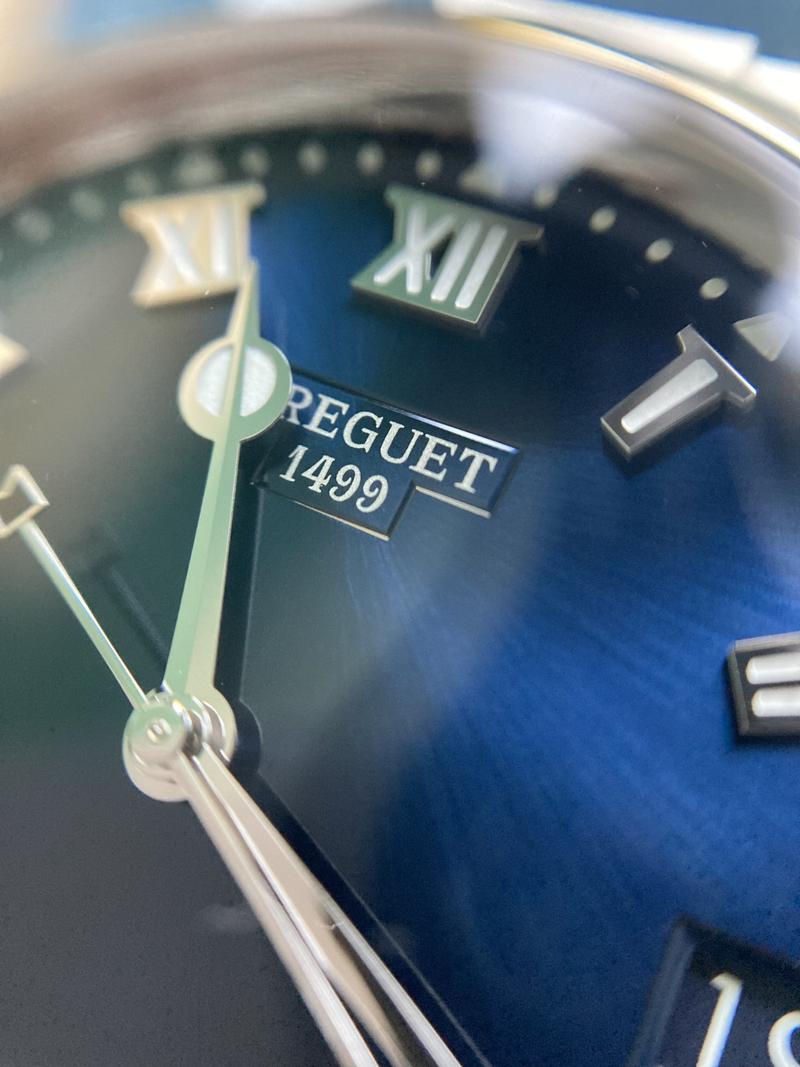
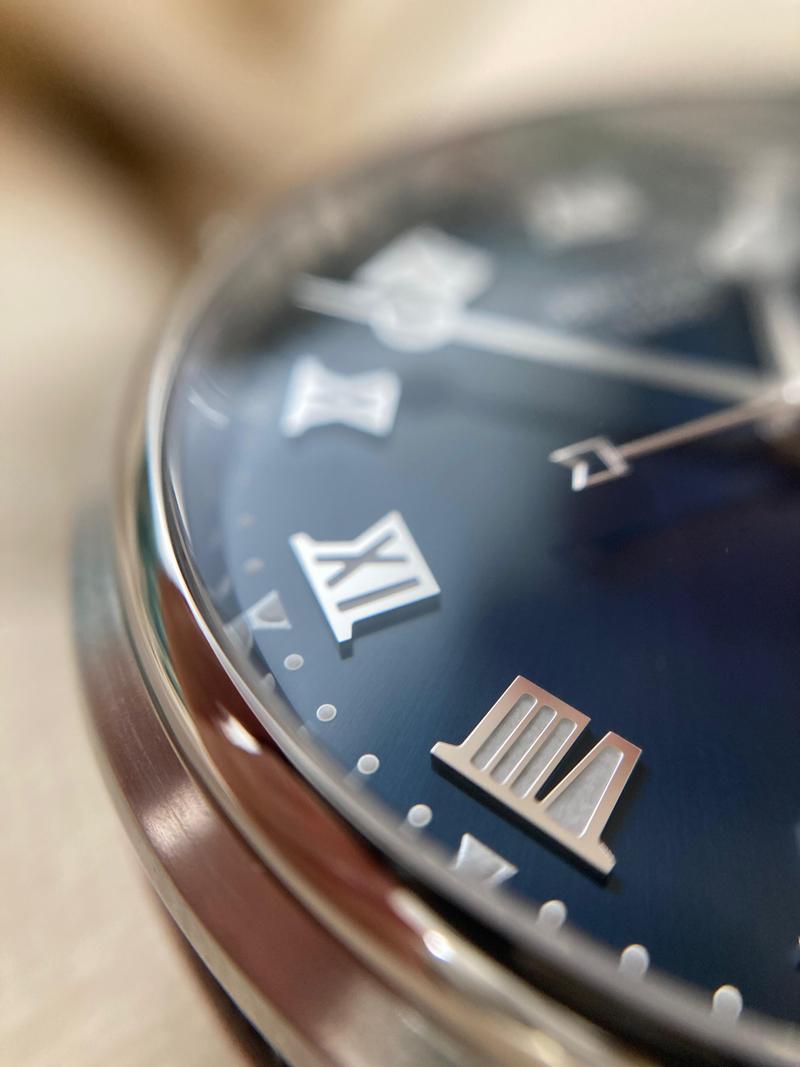
At first glance, the dial appears simple, but it reflects the blue waves of the sea in an unusual way. To achieve this effect, the sunburst pattern originates from the hand-guilloché logo below the 12 o’clock position, rather than from the hands as usual. The result is a subtle movement that is always visible on the dial. The dial itself is made from a solid gold plate, crafted in the classic Breguet style. White gold indices and other nautical-shaped appliqués sit on this “sea surface”. Even the counterweight of the second hand is shaped like the letter “B” for Breguet.
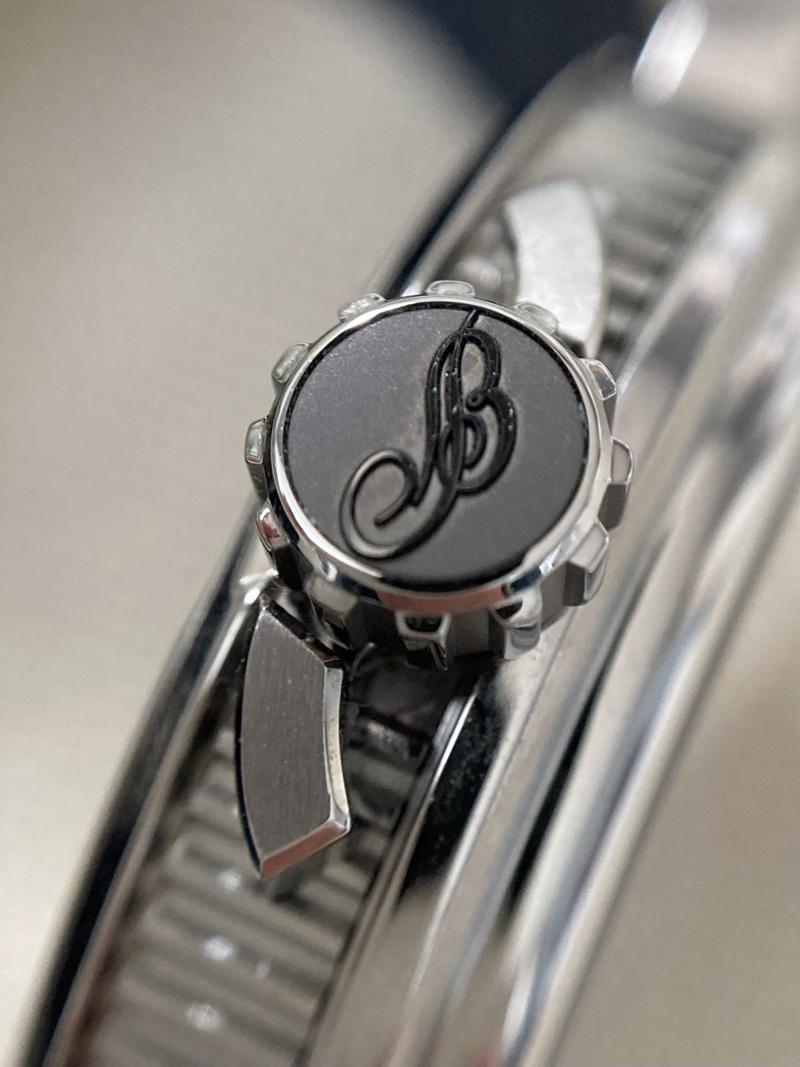
Another maritime reference can be seen in the crown guard, which is shaped like a wave. The Marine is also available in a gold case, but the titanium version is ideal for my purposes because it is saltwater-resistant. Thanks to the fluting on the side of the case, which is a typical Breguet feature, there is no need to worry about scratches. With the optional rubber strap, this is a beautiful watch for enjoying life on the beach. The screwed lugs make changing the strap easy, another Breguet signature feature.
I bought the Marine with interchangeable rubber and titanium straps because I don’t think rubber straps are suitable for the dark months of the year. The rubber strap fastens with a buckle shaped like a ship’s wheel.
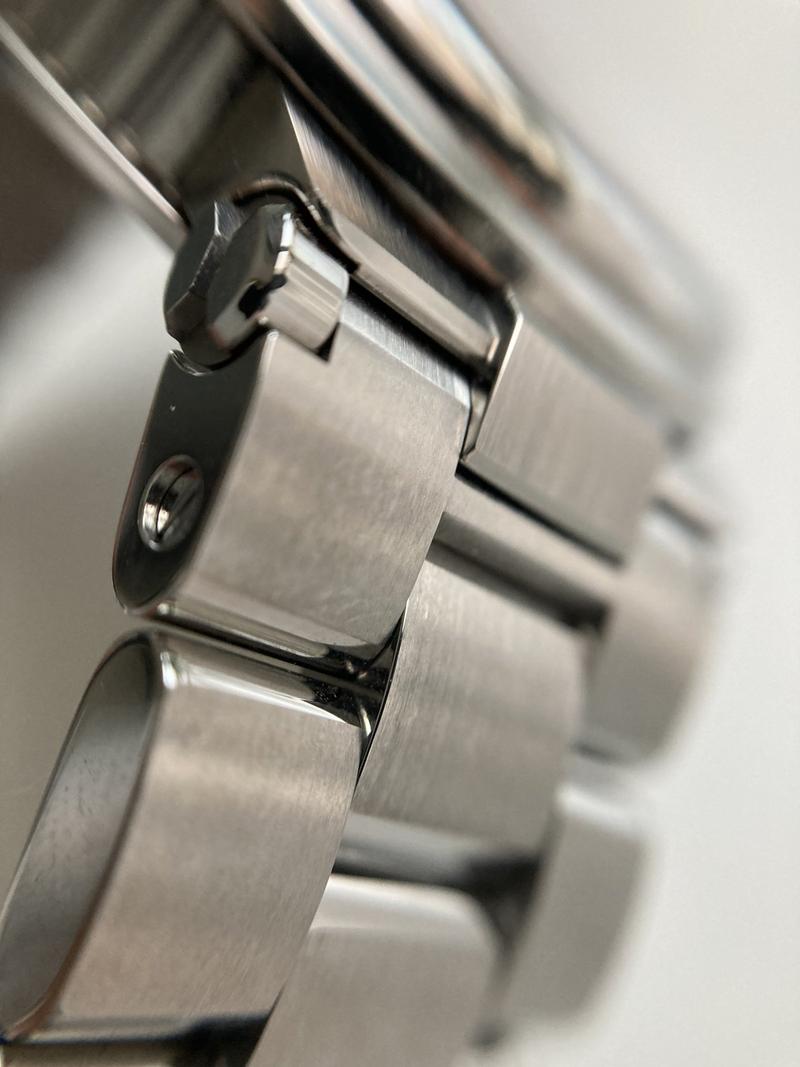
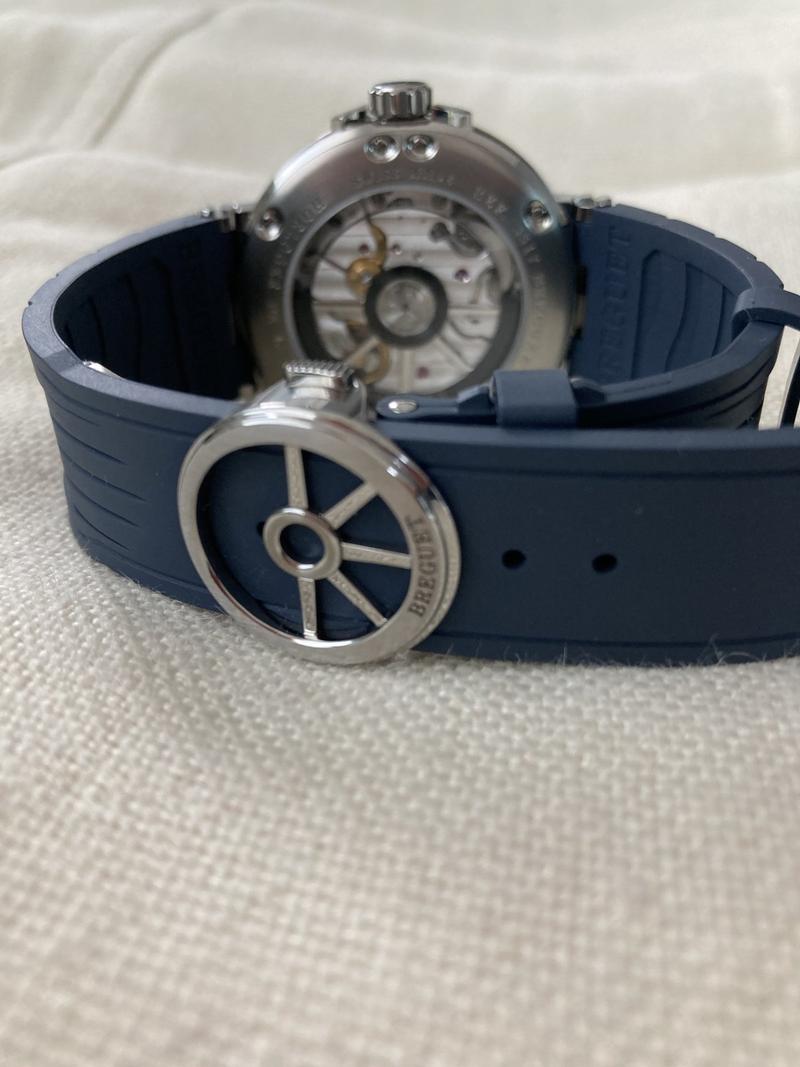
The elegant titanium bracelet sits smoothly on the wrist. It has a brushed finish that feels wonderful to the touch. Contrasting mirror-polished sections between the links and on the sides give it the same luxurious feel as a 4-ply cashmere sweater. The blue of the dial changes to a deep, dark navy blue as the light fades, so the color works perfectly even on gray days. After all, the sea experiences autumn storms, too.
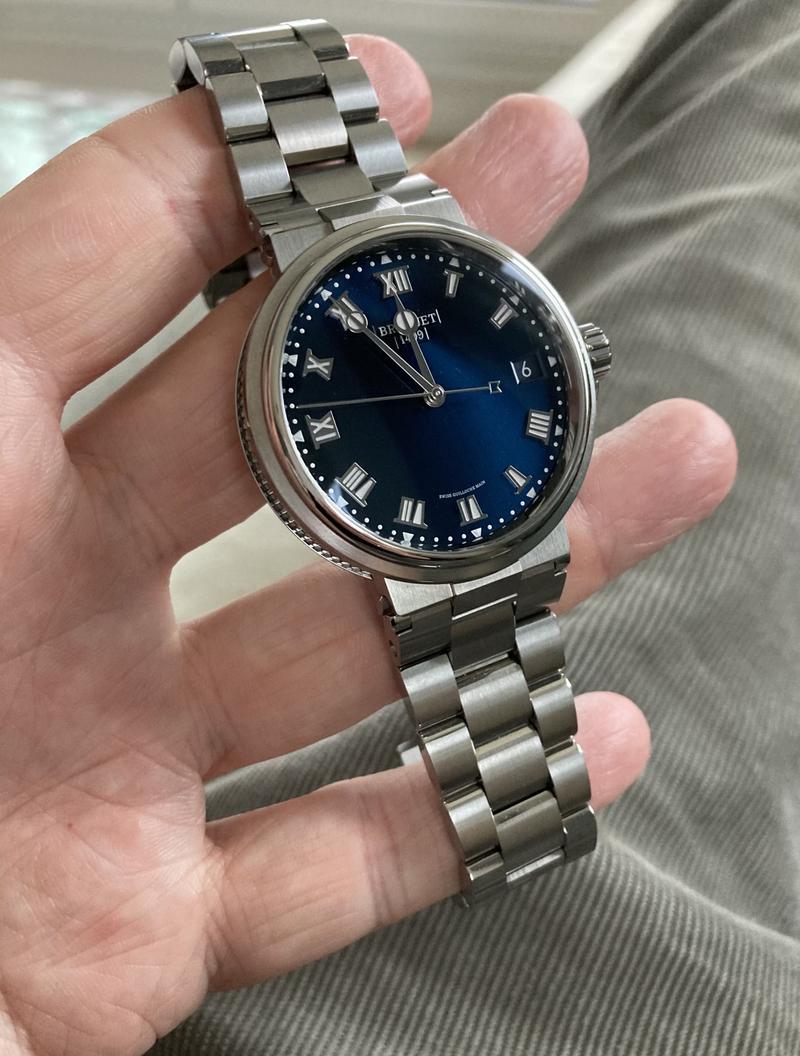
The movement’s decoration is consistent with the theme; the Geneva stripes resemble a teak deck. The 18-carat rotor is shaped like a ship’s wheel. Of course, the modern Breguet features, such as silicon technology, are fitting for a marine chronometer. Water and magnetism pose no threat.
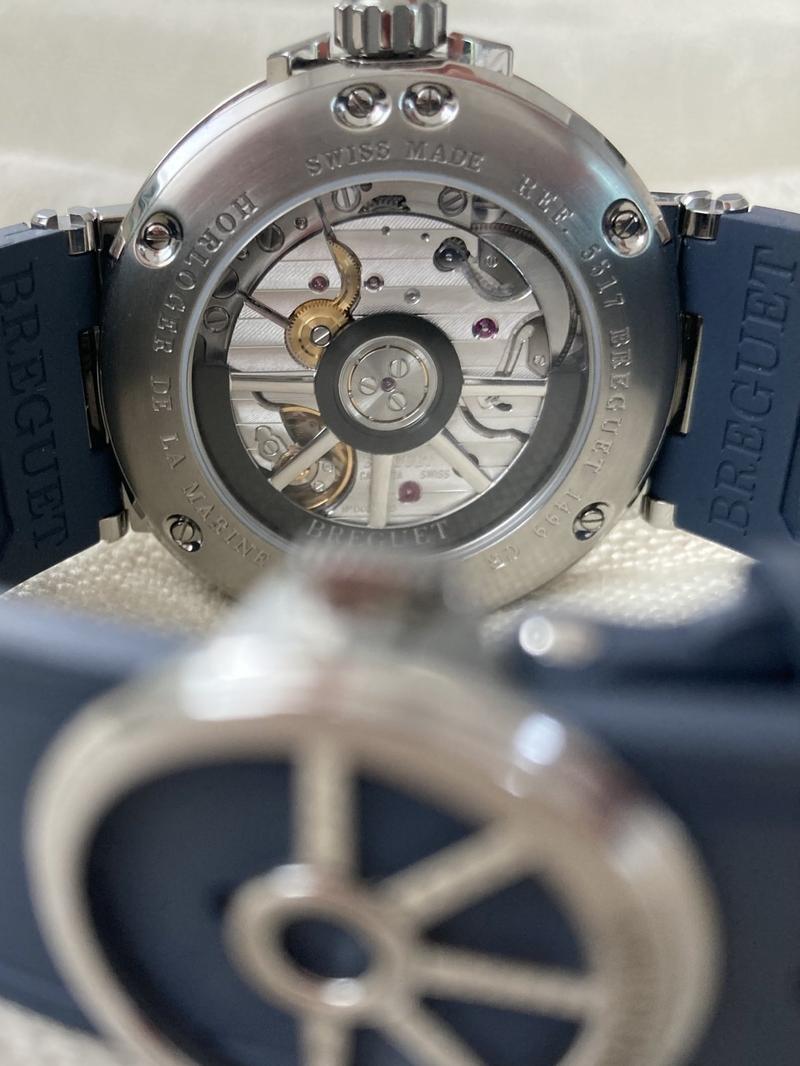
The box might go a bit overboard with the nautical theme. There’s another hint of a wave pattern on the outside, but the inside has a deck look. In any case, it is consistent to what we saw before.
All in all, despite its exciting history, the Marine is not a “tool watch”, as some people might imagine when daydreaming about watches for mountain climbing, deep-sea diving, or moon flights.
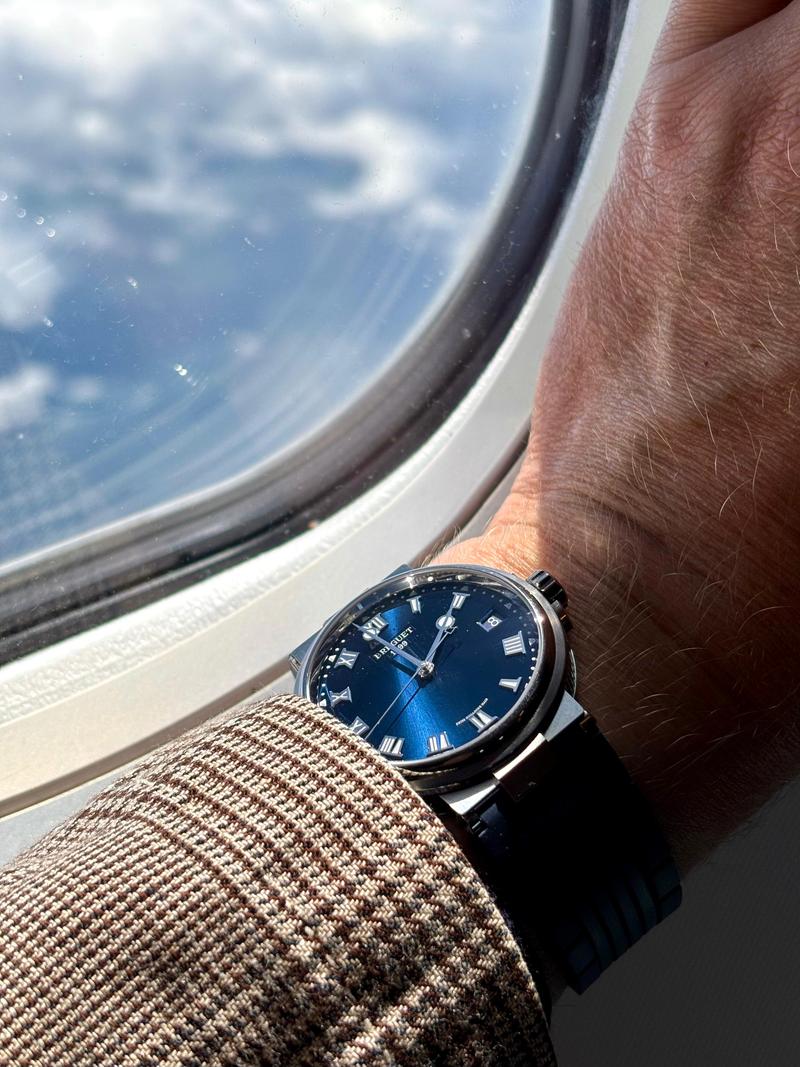
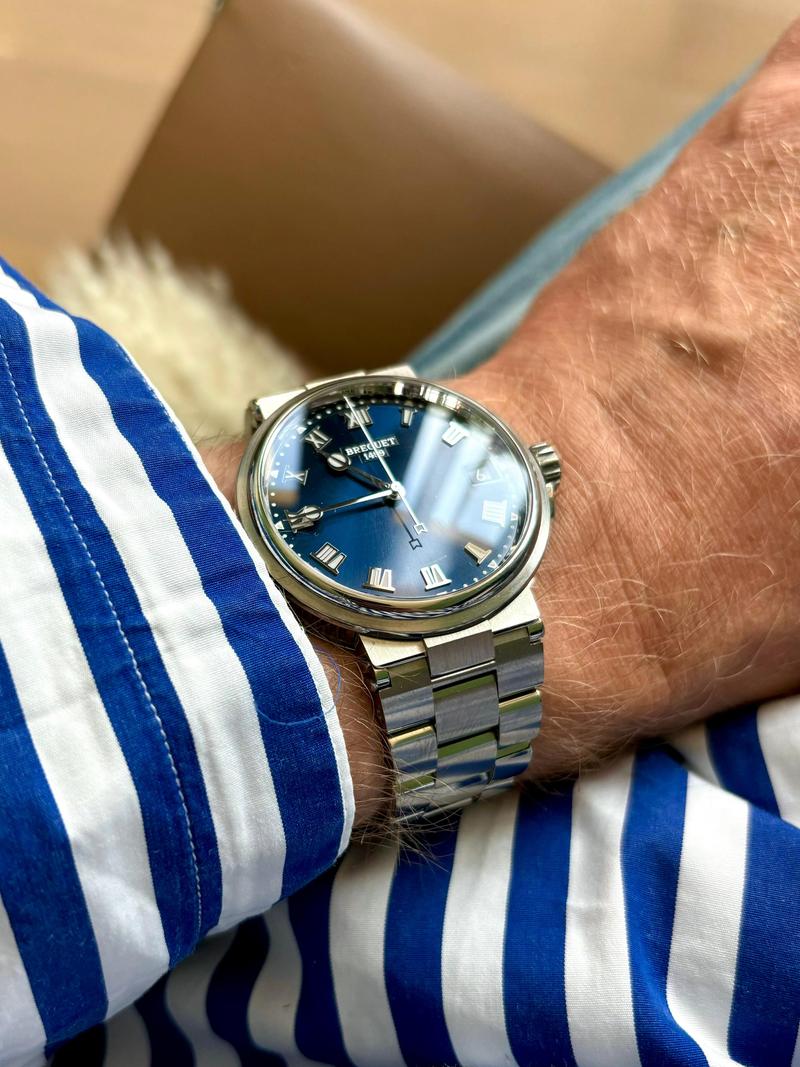
It’s more of a watch for the promenade deck than the engine room. What’s important to me is that I can take it with me wherever I go, whether it’s to the beach, where I won’t have to worry about sunscreen and sand getting in the watch, or to a water park, where the impact of a water slide is no problem.
For me my wish has been fulfilled: the Marine is my companion from the light blue of the Caribbean to the storm black of the North Sea – purely exalted.


Daniel 10.08.2025
That was an exalted read, thank you for bringing the spotlight to an underrepresented piece. The pictures are great and highlight the playful details. To my liking those are right on the edge of being to gimmicky, but as they are not to in your face they will always secure a high base line interest.